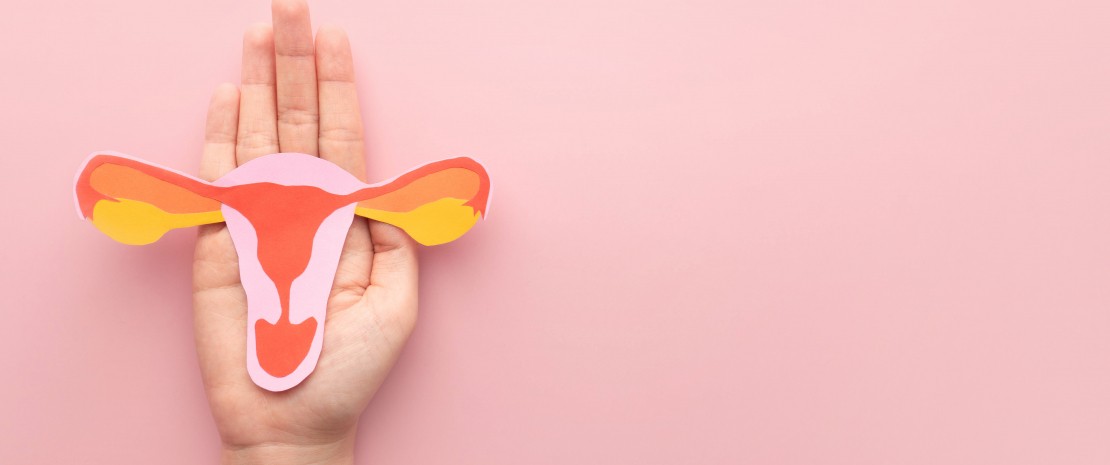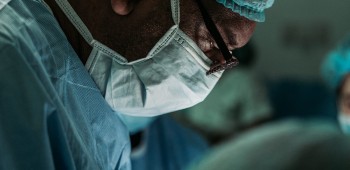Vaginal yeast infection
Is the microbiota involved in vaginal yeast infections?
70%-75% of women suffer from a vaginal yeast infection (vaginal candidiasis) at least once in their life.1 Symptoms of the disease, such as itching and abnormal vaginal discharge, can be particularly troublesome in everyday life. Do vaginal microbiota imbalances facilitate infection?2
- Learn all about microbiota
- Microbiota and related conditions
- Act on your microbiota
- Publications
- About the Institute
Healthcare professionals section
Find here your dedicated section
Sources
This article is based on scientific information
Sections

About this article
What is a vaginal yeast infection?
A vaginal yeast infection is an infection of the vulva and the vagina caused by a yeast-like fungus, in most cases Candida albicans3. After bacterial vaginosis, it is the second most common infectious vaginal disease.1 It is important to consult a doctor to confirm diagnosis, since its symptoms are not very specific. The most common clinical symptoms are abnormal vaginal discharge (leukorrhea), genital itching, and a burning sensation accompanied by vaginal pain or irritation that can lead to (sidenote: Dyspareunia Recurrent or persistent genital pain during sexual intercourse. ) or (sidenote: Dysuria Painful urination, often described by the patient as a burning, tingling or itching sensation. ) .1
42% Fewer than 1 in 2 women say that their doctor has ever explained to them how to maintain a balanced vaginal microbiota or educated on the importance of preserving as much as possible the balance of their vaginal microbiota
Is the vaginal microbiota involved?
Every woman’s vaginal microbiota is unique and, unlike other microbiota, the vaginal microbiota is well-balanced when its diversity is low4 Species of the genus (sidenote: Lactobacilli Rod-shaped bacteria whose main characteristic is the production of lactic acid, from where they get the name “lactic acid bacteria”. Lactobacilli are present in the oral, vaginal and gut microbiota of humans, but also in plants and animals. They are found in fermented foods, such as dairy products (e.g. certain cheeses and yoghurts), pickles, sauerkraut, etc. Lactobacilli are also found in probiotics, with certain species recognized for their beneficial properties. W. H. Holzapfel et B. J. Wood, The Genera of Lactic Acid Bacteria, 2, Springer-Verlag, 1st ed. 1995 (2012), 411 p. « The genus Lactobacillus par W. P. Hammes, R. F. Vogel Tannock GW. A special fondness for lactobacilli. Appl Environ Microbiol. 2004 Jun;70(6):3189-94. Smith TJ, Rigassio-Radler D, Denmark R, et al. Effect of Lactobacillus rhamnosus LGG® and Bifidobacterium animalis ssp. lactis BB-12® on health-related quality of life in college students affected by upper respiratory infections. Br J Nutr. 2013 Jun;109(11):1999-2007. ) dominate the vaginal microbiota,4 but yeasts such as Candida albicans are also found in smaller quantities.5
The vaginal ecosystem evolves over the course of a woman’s life.6 This change is normal and is influenced by the menstrual cycle, puberty and the menopause, sexual activity, contraception, intimate hygiene, and pregnancy.7,8,9
A (sidenote: Dysbiosis Generally defined as an alteration in the composition and function of the microbiota caused by a combination of environmental and individual-specific factors. Levy M, Kolodziejczyk AA, Thaiss CA, et al. Dysbiosis and the immune system. Nat Rev Immunol. 2017;17(4):219-232. ) is when the vaginal ecosystem is unbalanced (due to antibiotic treatment, douching, stress, smoking, etc.)2,6: species of Lactobacillus no longer predominate and instead certain (sidenote: Opportunistic infection An infection caused by a microorganism that is normally non-pathogenic, but which becomes so when the host microbiota loses its balance (through factors such as a weakened immune system, disease, age, certain medication, etc.). ) species may proliferate. This is what happens with vaginal candidiasis: Candida – yeasts normally present in the vagina and the gut5 – proliferate abnormally and become pathogenic under specific conditions. It is estimated that 10%-30% of women contract yeast infections following antibiotic treatment.10
10%-30% of women contract yeast infections following antibiotic treatment
Other factors that can increase the risk of infection1 include corticosteroid use, pregnancy, immunosuppressive diseases, poorly controlled diabetes, oral contraception, and IUD. Many factors have been identified but the mechanisms are not yet fully understood.11
Antifungals and probiotics
The classic treatment for vaginal yeast infections is antifungal medication administered orally or topically.11 However, relapses can occur and new therapeutic approaches are currently being evaluated.11 Recent work suggests that oral or topical probiotics (capsules or vaginal suppositories) may rebalance the vaginal microbiota and reduce the frequency of relapse.12,13
To reduce the risk of infection, certain intimate hygiene practices are recommended14 – daily habits to help care for your vaginal microbiota.
This article is based on scientifically approved sources. If you experience symptoms, please consult your family doctor or gynecologist.
1 Gonçalves B, Ferreira C, Alves CT, et al. Vulvovaginal candidiasis: Epidemiology, microbiology and risk factors. Crit Rev Microbiol. 2016 Nov;42(6):905-27.
2 Riepl M. Compounding to Prevent and Treat Dysbiosis of the Human Vaginal Microbiome. Int J Pharm Compd. 2018 Nov-Dec;22(6):456-465.
3 Ceccarani C, Foschi C, Parolin C, et al. Diversity of vaginal microbiome and metabolome during genital infections. Sci Rep. 2019 Oct 1;9(1):14095.
4 Gupta S, Kakkar V, Bhushan I. et al. Crosstalk between Vaginal Microbiome and Female Health: A review. Microb Pathog. 2019 Aug 23;136:103696.
5 d'Enfert C, Kaune AK, Alaban LR, et al. The impact of the Fungus-Host-Microbiota interplay upon Candida albicans infections: current knowledge and new perspectives. FEMS Microbiol Rev. 2020 Nov 24:fuaa060.
6 Amabebe E, Anumba DOC. The Vaginal Microenvironment: The Physiologic Role of Lactobacilli. Front Med (Lausanne). 2018 Jun 13;5:181.
7 Gupta P, Singh MP, Goyal K. Diversity of Vaginal Microbiome in Pregnancy: Deciphering the Obscurity. Front Public Health. 2020 Jul 24;8:326.
8 Greenbaum S, Greenbaum G, Moran-Gilad J, Weintraub AY. Ecological dynamics of the vaginal microbiome in relation to health and disease. Am J Obstet Gynecol. 2019 Apr;220(4):324-335.
9 Lewis FM, Bernstein KT, Aral SO. Vaginal Microbiome and Its Relationship to Behavior, Sexual Health, and Sexually Transmitted Diseases. Obstet Gynecol. 2017;129(4):643-654.
11 de Cássia Orlandi Sardi, J, Silva, D.R, et al. Vulvovaginal Candidiasis: Epidemiology and Risk Factors, Pathogenesis, Resistance, and New Therapeutic Options. Curr Fungal Infect Rep 15, 32–40 (2021).
12 Strus M, Chmielarczyk A, Kochan P, et al. Studies on the effects of probiotic Lactobacillus mixture given orally on vaginal and rectal colonization and on parameters of vaginal health in women with intermediate vaginal flora. Eur J Obstet Gynecol Reprod Biol. 2012 Aug;163(2):210-5.
13 Vujic G, Jajac Knez A, Despot Stefanovic V, et al. Efficacy of orally applied probiotic capsules for bacterial vaginosis and other vaginal infections: a double-blind, randomized, placebo-controlled study. Eur J Obstet Gynecol Reprod Biol. 2013 May;168(1):75-9.
15 Hill DA, Taylor CA. Dyspareunia in Women. Am Fam Physician. 2021 May 15;103(10):597-604.
17 Brown SP, Cornforth DM, Mideo N. Evolution of virulence in opportunistic pathogens: generalism, plasticity, and control. Trends Microbiol. 2012 Jul;20(7):336-42.











